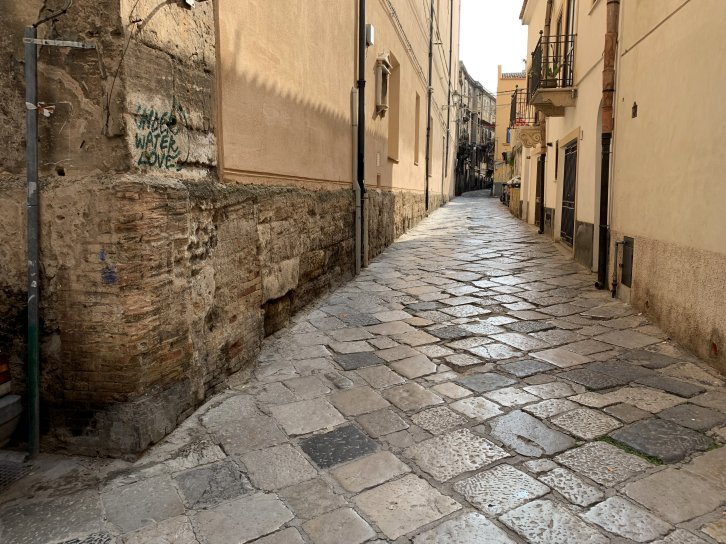Palermo

The city seems to have been founded as a port and main colony
by the Phoenicians in 734 BC as Ziz. This name is maintained
today in the Zisa palace. The
Phoenicians are credited with building the straight road now known as
Corso Calatifimi out from the city into the interior of the island.
Later it passed to Carthaginian control and then two Greek
colonies were founded here. They gave the city the name of
Panormos by the fifth century BC when the Phoenicians began using the
name on their coinage. With the conquest of Sicily the town
became Roman in 254 BC, then Vandals, Ostrogoths and finally, in 535, the Roman
Empire returned in the shape of Byzantium. This long period of
Roman rule ended in 831 when the city fell to the Arab invaders, under
whom it became the capital of Sicily in place of Syracuse. The
Arabs knew the city as Balarm.
In 1072 Robert Guiscard and Roger Hauteville
conquered the Arab capital and nearly sixty years later it became the
capital of the new kingdom of Sicily in 1130 and remained such until
1816 although the Sicilian possessions on the mainland fluctuated with
time.
Description
As the Norman capital many buildings were built in Palermo, but few
date back to before their time. The main ancient survivals are
the 2 rings of city walls. The first ring surrounded the ancient
Phoenician city, now called the Palaeopolis (Old City) and Neapolis
(New City). Some of the monumental walls survive in the Cassaro
(castle) district [above] - particularly the part built into the Santa Caterina
monastery - as does the main street, decumanus, now called Corso
Vittorio Emanuele. In the medieval period this defence was
extended to include the sea castle - Castello a Mare - within the enceinte.
Within the city the ancient architectural monuments can be split into
two classes, the religious and the profane. The most important
religious sites are Palermo cathedral; the Norman chapel in the palace - Cappella Palatina of the Palazzo dei Normanni; the Hermitage of St John - San Giovanni degli Eremiti; the church of St Mary of the Admiral - Chiesa della Martorana and the church of San Cataldo. The best profane monuments include the 4 palaces; the Norman palace - Palazzo dei Normanni; Zisa; Cuba and the Steri palace - Palazzo Chiaramonte and the sad remains of Mare Castle.
Why not join me at these and other Sicilian sites? Information on this and other tours can be found at Scholarly
Sojourns.
Copyright©2019
Paul Martin Remfry

